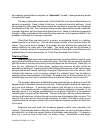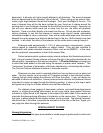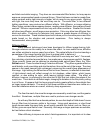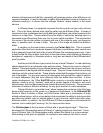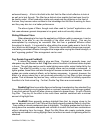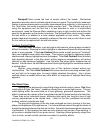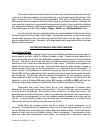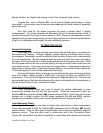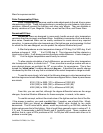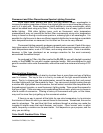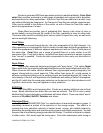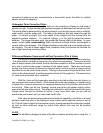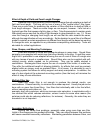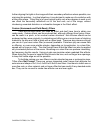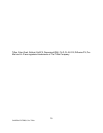
CAMERA FILTERS © Ira Tiffen
14
Fluorescent and Other Discontinuous Spectra Lighting Correct
ion
Since filters never actually add color, but only absorb certain wavelengths to
increase the relative proportion of others, the original light source must have the colors you
want in it to start with. Some sources are totally deficient in certain wavelengths, which
cannot be added back using only filters. This is particularly true of many types of metal
halide lighting. With other lighting types, such as fluorescent, color temperature
measurements may not provide the correct filter requirements since color temperature
theory is based on having a continuous spectrum, meaning light at all wavelengths. It is
possible for a light source to have a sufficient spectral distribution to emulate a correctable
color temperature when so measured, but its effect on film can be very different.
Fluorescent lighting generally produces a greenish color overcast. Each of the many
lamp types varies in color, and it can be difficult to know the precise correction even with a
color temperature meter, a set of CC filters, and running some tests. There is available,
however, a filter type developed as an average correction for the most commonly
encountered fluorescent lamps.
As produced by Tiffen, this filter is called the FL-D®, for use with daylight corrected
media, or the FL-B®, for use with tungsten corrected media. Both are designed to yield
good-to-excellent color under fluorescents, without the need for a meter and a variety of CC
filters.
Mixed Lighting Situations
A question often arises of what to do when there is more than one type of lighting
used in a scene. The key to this is to first try to make all the light sources behave the
same. That is, to choose one that predominates, correct the camera for that, and correct
the other lighting with 'gel' filters made for them. You can convert daylight coming through
a window with a gel placed over the window, that will make it a similar color temperature as
the predominant tungsten, or even fluorescent, lighting inside. Then correct the camera for
that type of light. There are many such combinations that will work, which one to choose is
often a matter of economics. Filtering a factory of fluorescents with gels, or filter tubes,
may cost far more than just gelling up the occasional window.
If there is no way to correct all the lights for one color temperature, try to minimize
the intrusion of those for which you cannot correct to the camera. Sometimes, this can be
used to advantage. The cool blue light from outdoors through a window can make the
tungsten-lit interior seem that much warmer, and cozier. Once 'normal' color is within
reach, frequently a variation can be even better. It all depends on your purpose, and the
story you are telling.
Color-Grad® Gradated Color Filters



